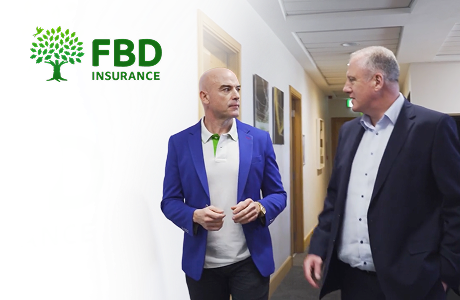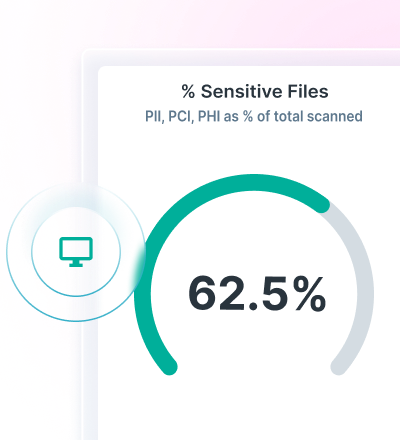Reimagining GRC: Turning Governance Into A Growth Driver, Not A Barrier
0 Minuten Lesezeit
For years, governance, risk and compliance (GRC) has been treated as a cost of doing business; a checklist exercise to satisfy auditors and regulators. But in an era defined by relentless digital disruption, data privacy mandates and increasing cyber threats, that outdated view no longer holds.
The organisations that thrive are the ones reimagining what GRC is — not as a slow-moving gatekeeper, but as a living framework that connects corporate integrity with business performance. Modern GRC cybersecurity strategies transform risk into resilience and compliance into competitive advantage.
What is GRC?
GRC stands for governance, risk and compliance, a unifying framework that ensures every decision and process aligns with both business objectives and regulatory obligations.
- Governance defines accountability. It sets the principles that guide leadership and ethical conduct.
- Risk management identifies potential threats: operational, financial, cyber or reputational, and prioritises them by impact and likelihood.
- Compliance ensures adherence to the evolving landscape of laws, standards and internal policies.
Traditionally, these pillars operated in silos. Today, an effective GRC framework must function as one integrated ecosystem that connects data, people and technology. This alignment enables visibility across operations and eliminates the duplication and blind spots that once slowed decision-making.
In modern cybersecurity, GRC has evolved beyond oversight. It provides context for every audit and control, so that security leaders justify investment, manage third-party exposure and prove continuous compliance.
From barrier to business driver
When built around intelligence rather than obligation, the GRC framework becomes a catalyst for transformation. Organisations that embed it within daily operations experience measurable gains:
- Operational clarity — Centralised data and reporting accelerate decisions and reduce duplication of effort.
- Reputation and trust — Stakeholders, regulators and customers view strong GRC postures as proof of reliability.
- Agility — Real-time compliance tracking allows faster adoption of new markets and technologies without fear of non-compliance.
A modern GRC framework helps executives move from reactive compliance to proactive strategy. Instead of slowing innovation, it safeguards it, providing the guardrails that let organisations expand with confidence.
Key pillars of an effective GRC framework
An intelligent GRC strategy is structured around three interdependent capabilities:
1. Governance as strategy
Governance is the blueprint that translates intent into execution. It sets direction, defines accountability and measures performance. However, in high-maturity organisations, it does more than regulate behaviour. Governance establishes why decisions are made and how they align with purpose.
Boards and executives now demand near real-time visibility into operational and cyber risk. This requires governance frameworks built on data integrity, transparent reporting and measurable outcomes. Technology-driven governance replaces static policy binders with dashboards that reveal, in seconds, whether the enterprise is operating within its strategic and regulatory boundaries.
2. Risk intelligence
Risk management has evolved into a continuous intelligence discipline. Instead of periodic assessments, enterprises now maintain an active risk radar that aggregates financial, operational and cybersecurity data to reveal weak signals of emerging threats.
Advanced analytics and machine learning model interdependencies across assets, people and processes. This transforms risk from a retrospective score into a predictive capability. Decision-makers no longer ask, “What went wrong?” but “What’s changing that could expose us next?”
Modern cybersecurity GRC strategies draw on behavioural data, network telemetry and cloud ecosystems to anticipate risk in real time. By correlating these data points, organisations can detect patterns that indicate systemic vulnerabilities and act before disruption occurs.
3. Compliance through automation
Compliance is shifting from a manual reporting function to an automated, self-auditing system. As regulations multiply — from privacy mandates to critical-infrastructure standards — automation ensures scalability without compromise.
AI-driven data classification, policy orchestration and real-time monitoring give compliance teams a living view of adherence across every domain: cloud, web, endpoint, email and network. This transforms compliance from a reaction to an assurance.
Automation also supports accountability, because continuous evidence collection provides the audit trail regulators require, while freeing human experts to focus on interpretation and strategy.
Together, these pillars redefine what GRC is in practice. When integrated, they create a self-reinforcing system that promotes agility and trust, which are the true hallmarks of a growth-ready enterprise.
Malaysia’s next advantage: Intelligent governance in a digital economy
As Malaysia’s digital economy gathers momentum, the GRC framework has become an operational necessity rather than a formality. The convergence of new cybersecurity threats, regulatory scrutiny and rapid digitalisation is forcing enterprises to rethink how they manage governance and risk.
Malaysia’s Personal Data Protection Act (PDPA) and the National Cyber Security Policy (NCSP) already place stringent expectations on data stewardship and breach management. Meanwhile, critical infrastructure and financial sectors are adopting global standards like ISO 27001 and NIST CSF to remain competitive in international markets.
For Malaysian organisations expanding regionally, a mature governance, risk and compliance framework enables two essential outcomes: credibility and scalability. By embedding GRC into the digital core, from cloud migration to third-party management, enterprises can maintain compliance continuity while pursuing growth across ASEAN.
Implementing GRC as a growth enabler
Reimagining what GRC is requires a strategic shift away from reactive oversight and toward integrated, intelligence-driven management. The transition typically follows three progressive stages:
1. Assessment of current maturity
An effective GRC transformation starts with brutal honesty. Organisations must quantify their current state: not only what policies exist, but how effectively they translate into real-world control. Such assessment examines decision latency and the flow of information between departments.
The goal is to expose invisible weaknesses, like where manual approvals slow innovation, where compliance data isn’t feeding into cyber-risk assessments or where governance functions operate reactively rather than predictively. Benchmarking against global standards (such as ISO 37000 for governance and NIST for cyber-risk) provides a baseline for advancement rather than a checkbox for completion.
2. Design and integration
The next step is architectural. A GRC framework gains value only when its components talk to each other. Risk registers, incident reports and compliance attestations should not exist as independent repositories. They should feed a shared system of record.
By integrating GRC with enterprise data platforms, organisations enable cross-correlation between business risk and technical telemetry. For example, a spike in privileged-access anomalies could automatically escalate into governance dashboards and trigger board-level review. The framework becomes a live system that converts risk signals into actionable insight.
3. Continuous optimisation
True maturity lies in sustainment. After all, governance shouldn’t be a quarterly ritual, but a continuous feedback loop powered by automation and analytics. Machine learning can identify policy drift, surface non-compliant behaviours and prioritise remediation based on impact. Executive oversight then shifts from asking “Are we compliant?” to “Is our compliance improving performance?”
Cross-functional collaboration is likewise crucial. When cyber, legal and operational teams interpret the same data through a unified lens, they can respond to disruption faster and more coherently. Regular recalibration against strategic goals keeps GRC relevant and directly tied to enterprise growth.
Rethinking control: governance in the era of intelligent data
There’s little doubt that the enterprises able to align their GRC frameworks with intelligent data management gain the confidence to move faster. Governance must stop being the brake and become the steering wheel, keeping innovation on course.
For that shift to happen, governance needs to operate with real-time insight. It’s not enough to know what’s compliant. Leaders must know when data behaviour becomes risky and why. Forcepoint Data Detection and Response (DDR) embodies this new model of control. DDR continuously analyses how data moves across endpoints, detecting anomalies, mapping intent and initiating precision response before risk turns into loss. It gives enterprises the situational awareness to make governance decisions based on live intelligence, not after-the-fact reports.
Connect with Forcepoint’s experts to see how DDR can help you turn compliance visibility into a strategic advantage.
In dem Artikel
X-Labs
Get insight, analysis & news straight to your inbox

Auf den Punkt
Cybersicherheit
Ein Podcast, der die neuesten Trends und Themen in der Welt der Cybersicherheit behandelt
Jetzt anhören









